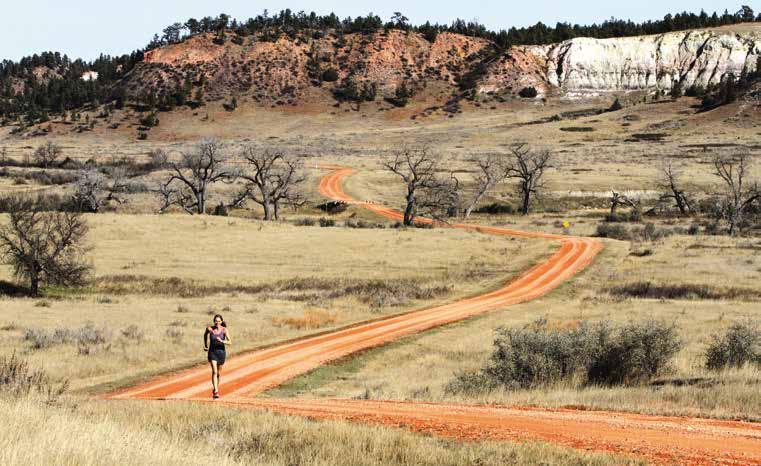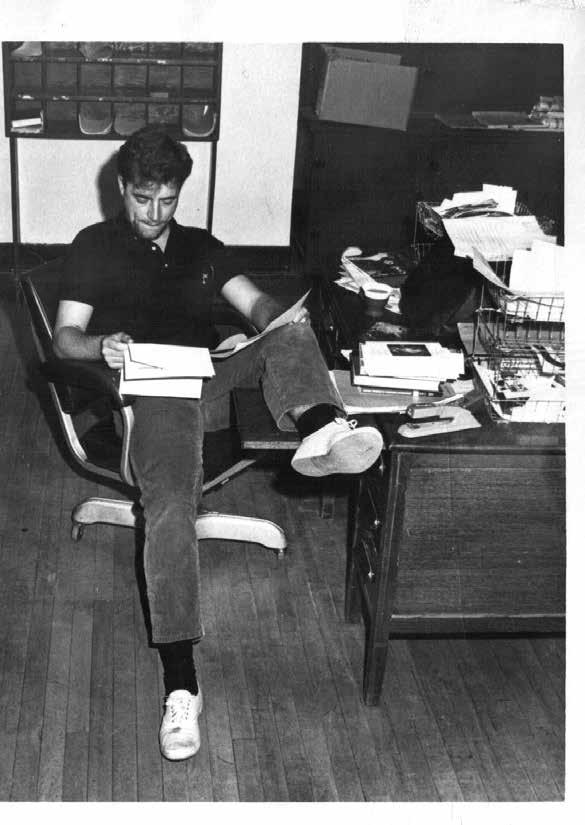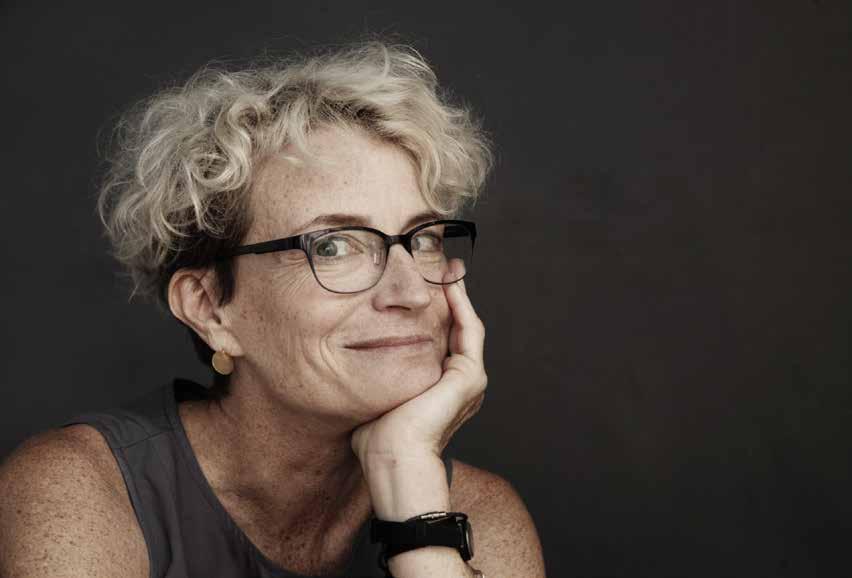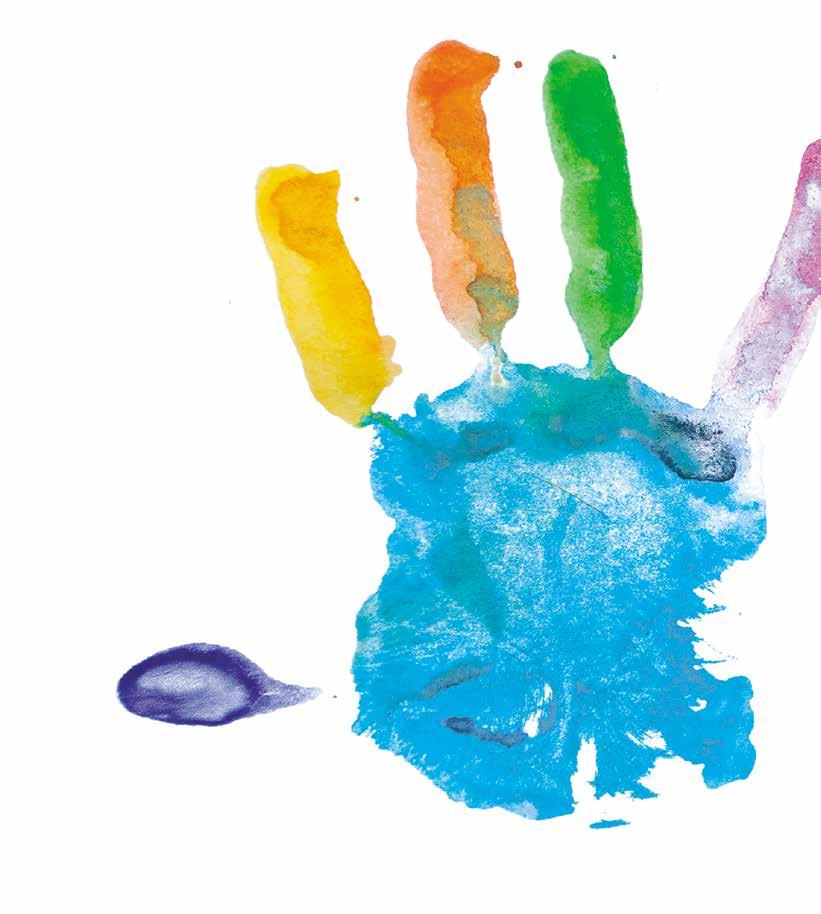
14 minute read
Finding the Heart of Health and Happiness
by Melanie Carvell
“The groundwork of all happiness is good health.”
Advertisement
—James Leigh Hunt
We know the basic ingredients of good health include eating well, staying active, and managing stress. But what motivates us to develop these life-changing healthy habits and stick with them? What if the recipe resulted in more than just a clean bill of health from the doctor and the satisfaction of looking fit in Facebook posts? Scientific evidence shows us that good health and happiness are intimately related, and in fact, the single greatest benefit of a healthy lifestyle is happiness. Developing a blueprint for a healthier lifestyle can give us a return on our investment that includes more than just better checkups. Rather than being a selfish endeavor, working on our own health and happiness can be a strategic route to wellbeing, allowing us to become the best version of ourselves at home, at work, in our relationships, and in our communities.
One of my cycling pals has a remarkable story of a successful lifestyle change. After a reasonably healthy life journey he found himself in a tough spot. His job had him traveling most days of the week, and weekends were a swirl of endless activity with his two school-age children. He didn’t feel like he had the time to invest in his own wellness even though he knew he should, and over time his weight crept up while his daily energy level dipped down. There were comments and concerns along the way; a coworker joked that if he kept gaining weight he’d soon be as fat as he himself was. His doctor voiced concern about the direction his health was heading. An older female neighbor (who apparently had lost an appropriate conversational filter) looked at him and said, “Oh my God, you’ve gotten fat!” But, the tipping point came when he asked his teenage daughter what she wanted for her graduation present. She said she simply wanted him to be healthy again. His daughter could have asked for anything, but she wanted her dad to be there for her in all of life’s important moments, not just for graduation. His love for his daughter and his goal of being a good example for his family led him to embark on a gradual lifestyle change. He started with exercising on an indoor cycle and then, with the encouragement of his neighbor who loaned him a touring bicycle, started riding outside. To stay accountable, the two of them set a goal to complete CANDISC, North Dakota’s five-day bicycle tour, that summer, and successfully crossed it off their list. A year later and carrying one hundred pounds less, he started running with another neighbor and continued to set goals while building a support network of great workout buddies.

Research proves that goals alone don’t motivate behavior until they have a personal meaning. Guilt, doctors’ orders, and even dire health consequences are not likely to inspire long-lasting changes. Choosing the right “why,” one that resonates with us personally, is the most important step on the path to better health—and ultimately, happiness.
Become physically active for what you will gain rather than what you want to lose.
Mountains of research demonstrate the many physical and mental benefits of moving more, but what is the best way to start and, more importantly, keep physical activity as an important part of our life? Dr. Michelle Segar, a behavioral sustainability and motivation scientist at the University of Michigan, has studied the most critical issue facing our society: the failure to achieve widespread adoption of health-promoting and disease management behaviors. Segar’s research shows that our “meaning” of exercise is a critical determinant of how successful we will be in maintaining a physically active lifestyle. Do you think of the ability to move as a gift you get to do every day, or as a necessary evil that feels like a chore? Thinking of exercise as a chore you have to do or should do undermines motivation before you even start. Segar’s research also shows that if your number-one reason for starting an exercise program is to lose weight, you will likely be unsuccessful at continuing. Study participants who exercised as a way to lose weight actually accumulated the least amount of activity.
Unfortunately, our most common reason for exercising is the least helpful for many of us who jump on the diet and fitness bandwagon, only to get frustrated and quit before we get a chance to benefit in any way. Weight loss and other health metrics such as healthy blood pressure, blood sugar, and cholesterol profiles are critically important, but the promise of good health “down the road” does not usually get us out of bed and moving today. Rather than focusing on the bathroom scale, focus on the daily positive rewards of being more active: connecting with others, decreasing your stress, gaining strength and energy, and improving mental focus.
As humans, we are hardwired for instant gratification and are likely to sustain behaviors only if they have an immediate benefit to our daily life. The best determination of how likely we are to be successful keeping active is appreciating how moving more can add to our life today. As a result, you’ll be much more likely to stick to your exercise commitment, which gives you a fighting chance to benefit from improved health metrics and a happier, more fulfilling life.
Rather than thinking of exercise as just a necessary tool for weight loss or other metrics, let’s look beyond that. Exercise for sanity, not vanity. Think of daily movement as your personal power source that fuels life and our many roles in it. Investing in our health makes us a much better investment for others. Early twentieth-century author Frank Gelett Burgess wrote, “Our bodies are apt to be our autobiographies.” What story will yours tell?
You are what you eat, so don’t be fast, easy, cheap, or fake.
Dan Buettner is the founder of Blue Zones, an organization that helps Americans live longer, healthier, and happier lives. His groundbreaking work on longevity focuses on the lifestyles of people living in the “blue zones,” those places in the world where people are living longer and happier lives with statistically less chronic disease. He has identified five areas: Okinawa, Japan; the Italian island of Sardinia; the Nicoya region of Costa Rica, the Greek island of Ikaria; and Loma Linda, California.
By focusing on these bright spots of good health he has been able to tease out the common characteristics of longevity. In these places, people eat what is described as the Mediterranean diet: real food, consisting mostly of fruit, whole grains, greens, and beans each day. They consume avocados, nuts, and seeds, and cook with other healthy fats such as olive oil. They moderate their alcohol intake and eat meat and fish in small portions. They usually cook at home and have their largest meal midday, rather than in the evening, following the wise adage “Eat your own breakfast, share your lunch with a friend, and give most of your dinner to your enemies.” They follow the 80/20 rule, stopping when they feel their stomachs are 80 percent full. In these places the longest-lived folks don’t run marathons, join gyms, or take nutritional supplements. Instead, they live in supportive environments, often with community gardens and walking paths, that continually nudge them into moving more. They have a strong sense of purpose, close family ties, and are a part of social networks that support healthy behaviors.
What can you take from these best practices to add years to your life, and most importantly, life to your years?


Connections with others are at the heart of our health and happiness.
Along with eating more fruits and vegetables, “blue zone” folks are social folks. Connecting with other people is the number one predictor of physical, mental, and spiritual health. Strong personal relationships make it far more likely that life will be joyful, and longer. From Aristotle and Socrates to contemporary scientists, strong social bonds are recognized as the most meaningful contributor to happiness. We may take pride in being independent, but social connection is a fundamental human need. Being connected with others is just as important to health as regular exercise, stress management, and a healthy diet. If we have strong social connections we are twice as likely to have a healthy heart profile. Connectedness strengthens our immune system, decreases inflammation, helps us recover from disease faster, and lowers our levels of anxiety and depression. The number-one exercise adherence tool? Socialization. Being active with someone else is one of the best ways to ensure we get moving ourselves, and we are also much more likely to exercise more intensely. Most important weight loss tools? Peer support and accountability. Most critical component in overcoming addiction? Peer mentorship. Having a sponsor who has traveled the road of overcoming addiction is powerful, and those who mentor others are twice as likely to stay sober and drug-free themselves. Together we are always stronger!
“We are happy when we are growing.” —William Butler Yeats
Being happy, like being connected to others, significantly improves our health and longevity as well as boosting our immune system and resilience to stress. When we are happy we are much more likely to be effective leaders, and to be employees who are more cooperative, creative, and productive. Happiness researchers have found that positive emotions help us establish deeper social ties, which many argue is the most meaningful part of life. Our happiness benefits not only us, but everyone around us.
Fifty percent of our happiness “set point” lies in our genes; life’s circumstances contribute ten percent, and forty percent is due to our intentional activity—how we think and act on a daily basis. What we do every day matters much more than what we do once in a while. Happiness is much more likely to come from experiences, not material things. Experiences contribute much more because we anticipate them, savor them, and they give us memories and stories to tell. They become a part of family lore. Happiness also comes from enjoying the process. The journey can be hard, whether training for a marathon, making a huge feast, writing a book, or raising a child. But more often than not, when we look at achievements, the defining moments were the experiences that led up to the achievement and the lessons learned along the way, the camaraderie discovered. Taking pleasure in the atmosphere of growth and realizing it is not necessarily the goal attained but the striving that brings us delight and contentment. The fun part doesn’t come later - now is the fun part. “Everyone wants to live on top of the mountain,” Andy Rooney of 60 Minutes fame quipped, “but all the happiness and growth occurs while you’re climbing it.”
We may think more accomplishments and accumulating possessions bring more joy, but we know true happiness comes from doing something of value and meaning for others. It is by spending oneself in the service of others that we become rich. Happiness comes from balancing care and compassion for others with care for oneself.
An inspiring story of how helping others helps ourselves happened at the 2018 Boston Marathon this past April. At race time the temperature was 39 degrees Fahrenheit, the coldest in the marathon’s last three decades. Heavy rain was falling, and the wind was gusting up to 25 miles per hour. Desiree Linden, the scrappy five-foot-one, 96-pound determined Olympian faced the wretched conditions to become the first American woman to win the race in over thirty years. Desiree was struggling and seriously contemplated quitting midway through the race. At that point she confided in Shalane Flanagan, one of her training partners and competitors, that she was not doing well and likely would not be able to finish. A few miles later, Shalane had to stop for a bathroom break and Desiree decided to slow down, wait for Shalene, and gradually work to bring her back up to the lead group. A couple of miles later, when the lead runner, Mamitu Daska from Ethiopia, made a surge in the race pace, Desiree dropped back again, this time to help another contender in the race who had fallen back, Molly Huddle. Things turned around for Desiree. At 22 miles she was in the lead, and continuing to push hard, she crossed the finish line first. She credits her surge and eventual win to taking the focus off her own pain and reaching out to help her competitors. Desiree said, “When you work together, you never know what’s going to happen. Helping her helped me, and I kind of got my legs back from there.”
Along with compassion for others and for ourselves, cultivating a practice of gratitude can bring significant happiness to our lives. In our day-to-day lives it’s easy to get caught up in the things that go wrong and feel like we are under a cloud through which the sun will never shine. We tend to overlook everyday beauty and take the good people and positive things in our life for granted. Keeping a daily gratitude journal—writing down three good things that happened during each day along with how they affected you—can be a powerful way to learn how to notice and savor the good things in your life. Fostering a mindset of thankfulness is a proven way to bring joy to our lives. We cannot be grateful and unhappy at the same time. If we are not grateful we will be unlikely to ever be happy, no matter how much we have.
“Nothing is worth more than this day.” —Goethe
Along with gratitude and compassion, mindfulness tools like meditation and deep breathing are effective in creating better mental and physical wellbeing. Regular meditation is a proven way to improve sleep and boost our immune system, as well as being a powerful antidote to help decrease depression, anxiety, pain, migraines, and panic attacks. Being mindful simply means staying in the present moment, so we don’t get caught up in replaying yesterday or worrying about tomorrow. Hanging on to the past saps our energy, and worrying about tomorrow steals precious time from today. Being mindful helps us to enjoy life while it is happening, rather than missing out because of worry and busyness.
Meditation can be as simple as setting down our juggling balls (and our phones!) for a moment and taking a few deep breaths. Concerned that you don’t have time to meditate? Keep in mind that connecting with your breath anytime throughout your day will bring benefits. Rather than reaching for your phone, the next time you are waiting in line at the grocery store or coffee shop, connect with your breath. Sitting at a red light or stuck in traffic? Keep your phone out of sight and use the moment to inhale slowly for a count of four, and exhale slowly for a count of six. Even short meditations give our brain a place of rest and a chance to “reset” to a more balanced, calm place. Novelist Anne Lamott said it best: “Almost everything will work again if you unplug it for a few minutes, including you.”
By living life as best as you can this very moment, the past and the future will take care of themselves. Mindful people bring a measure of peace to their relationships and are less likely to be reactive or take things too personally. They are fully present when listening without trying to control, judge, or get in the last word. How do you leave others feeling after they have crossed your path? In this stressed-out, divisive world, we could all benefit from practicing mindfulness and meditation.
“The secret to living well is to eat half, walk double, laugh triple, and love without measure.” —Tibetan Proverb
My cycling pal put all the right ingredients together to be able to move toward health and happiness and navigate the rocky road to behavior change. It was his decision to embark on a new lifestyle that embraced health, and he did it for the right reasons that resonated deeply within him. He focused on the daily and immediate benefits of moving more to keep his motivation flowing instead of flagging. He progressed gradually, knowing that there would be ups and downs and times where he would have to forgive himself for setbacks and jump back on track. He found support systems and friends that could mentor him and keep him company on his new path. He now is in the business of mentoring others and gives back to the health of his community in many ways, which in turn helps keep him accountable. Let his journey inspire you to find yours.
Our self-care is really our gift to the world. When we are well and happy it sets the stage for a life that is truly fulfilling for us, and for all those who surround us.
MELANIE CARVELL is an inspirational health and wellness speaker who loves sharing her fitness enthusiasm with others. She is a physical therapist, worksite wellness consultant, six-time AllAmerican triathlete, and author of Running with the Antelope: Lessons of Life, Fitness and Grit on the Northern Plains.








